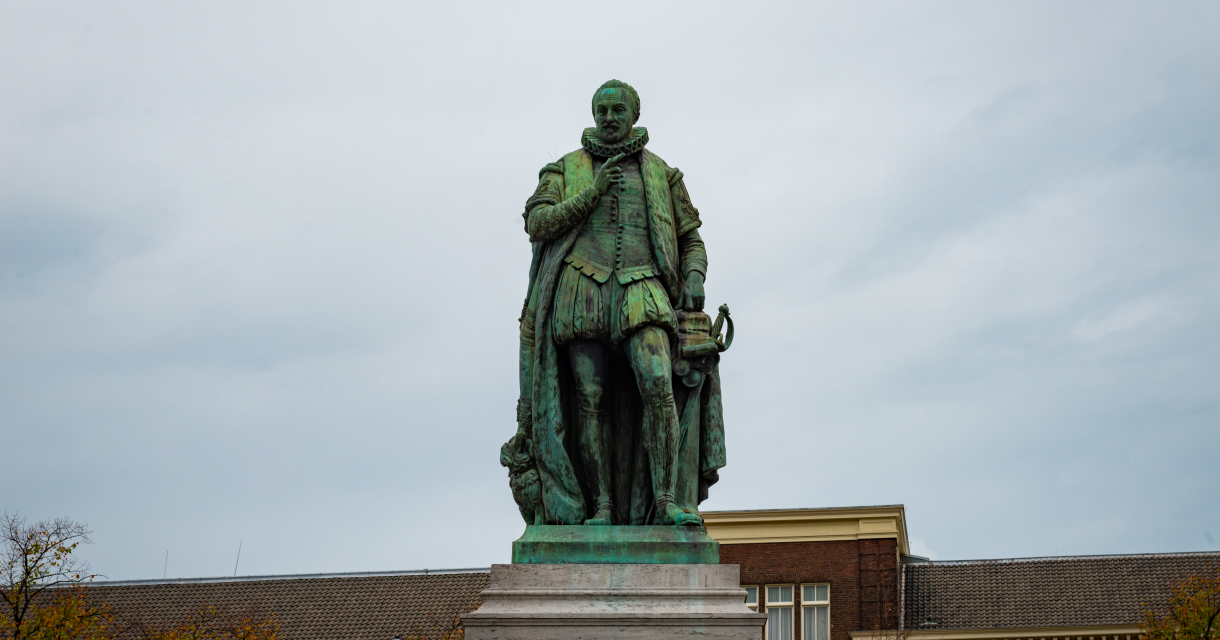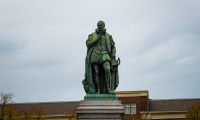Statue Prince William of Orange (1533-1584, nickname: William the Silent), 1848

There was a discussion for a year about the position of the dog, the posture and clothing of the prince and about whether or not he should wear a calotte. The design of the statue of William of Orange brought up a lot for discussion. However by the end of 1842 it was time: sculptor Louis Royer received the commission. The members of the national committee and initiator King Willem II quickly agreed on the decision to engage this artist. There was only one sculptor in the Netherlands who could bring such an assignment to a succesful conclusion: the Flemish sculptor Louis Royer. This court sculptor and director of the sculptor's department of the Amsterdam Academy made a name for himself with a number of large statues in Amsterdam. At the end of 1841 he was asked to make a sketch design for a statue of William of Orange. It was not until 1848 that the image was revealed. The work was postponed, although it remains unclear why.
So there he stands in the middle of the square: Royer’s indisputable Father of the Fatherland. Many preferred this view of William of Orange as a statesman to the equestrian statue (1845) of the prince opposite Noordeinde Palace. Here is a statesman with his right hand raised in a cautionary pose and his left on the sealed documents of the Union of Utrecht (1579), the alliance of the seven Northern Dutch provinces against their Spanish rulers and the basis of the political unity of our country. The dog symbolises loyalty (the story goes that the dog once saved his life).

